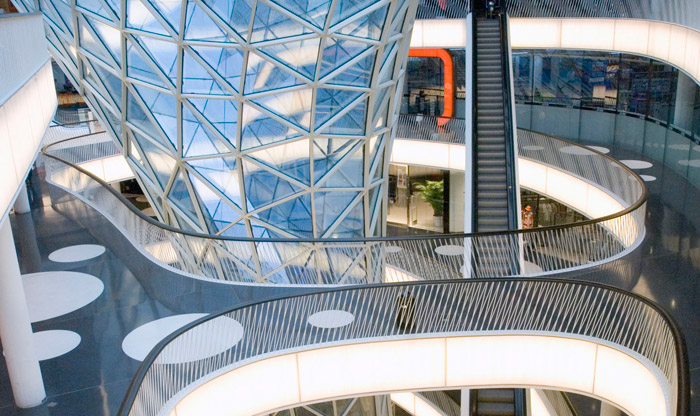Energy efficiency opportunities abound, the research tells us. Because I read this research, I know that better insulation in homes, less wasteful lighting in businesses, more efficient industrial processes and improvements to other hidden energy uses offer the potential for savings, but typically none of these opportunities are obvious to the naked eye. Thus I was surprised during a recent trip to Germany to witness several simple energy-saving technologies that underscore the idea that energy efficiency opportunities are widely available.
The first thing I noticed were motion-activated escalators that turn on when somebody gets on, and turn off when the person gets off. In Munich’s subway stations, the escalators don’t move until somebody approaches at the top or bottom. Not only does this reduce energy use, but I assume it reduces wear and tear on the equipment. It also makes subway stations much quieter. (Whenever I’m in a DC or Boston train station during off hours, I’m always struck by the kthump, kthump noise of empty escalators at the ends of the platform.) I also saw a variation of this idea in the Vancouver, B.C., airport, where the escalators move very slowly until somebody steps on, at which point they speed up.
Second, I stayed in several hotels where it was impossible to leave the lights on in the hotel room when I went out. These hotel rooms had a slot above the light switch just inside the door, where I had to insert my room keycard to be able to turn on any lights. When I pulled out the keycard to leave, all the lights turned off. When I returned and inserted the keycard, all the lights returned to how they had been before.

Most marvelously—I think I laughed with delight when I figured this out—in the newest hotel that I stayed in the latch on the hotel room window was linked to the AC. If the window was open or even closed but not latched, the AC wouldn’t run. The only way to run the heat or cooling was if the window was closed and sealed. (Though in the same hotel, I discovered that the radiators in the hallway were pumping out heat even though the hallway windows were open. There’s always room for improvement.)
Finally, many buildings had external shades or awnings to limit unwanted heat from the afternoon sun. I stayed in a hotel room on the 12th floor of a tower that had big venetian blinds outside the windows that could be controlled with electronic switches inside the room. One day I didn’t close the blinds and the room was boiling; by the next day I had figured out how to close the shades and returned to a pleasant room. I didn’t need the air conditioning as much that second day. Another hotel room I stayed in had perforated metal shutters on the outside of the window that were operated with a hand crank inside the window. Traveling around town, I saw tall office buildings with retractable fabric awnings that provided full or partial shade to windows.
These four ideas might not save huge amounts of energy on their own, but they are visible reminders that energy efficiency opportunities indeed are everywhere and that measures such as these can contribute to a broader effort to reduce wasteful energy use.
Truong Duy
